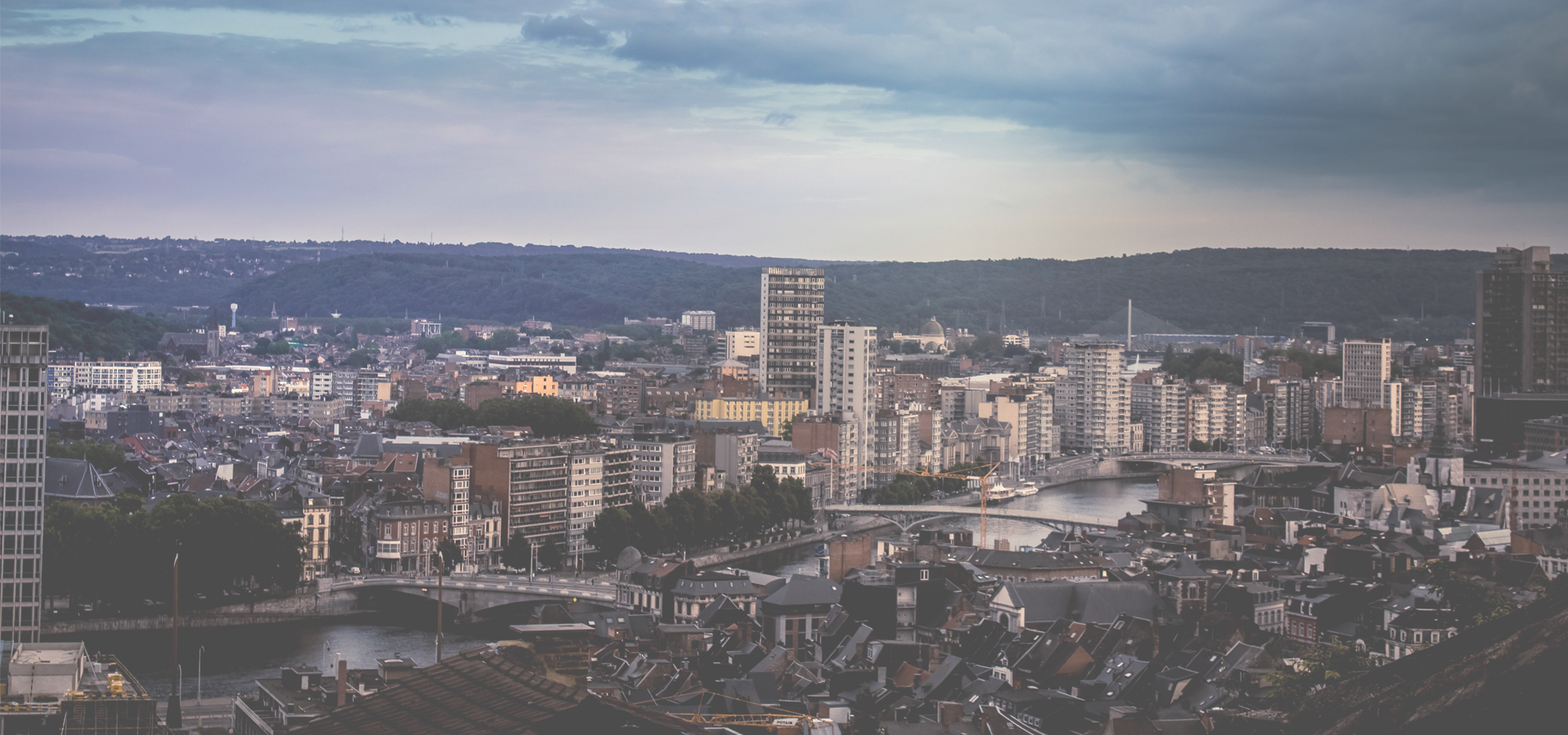Verviers, Liège Province, Wallonia, Belgium
🇧🇪 Verviers is a city and municipality of Wallonia located in the province of Liège, Belgium. The municipality consists of the following districts: Ensival, Heusy, Lambermont, Petit-Rechain, Stembert, and Verviers. It is also the centre of an agglomeration that includes Dison and Pepinster, making it the second biggest in the province and an important regional centre, located roughly halfway between Liège and the German border.
Water has played an important role in the town's economy, notably in the development first of its textile and later its tourist industries. As a result, many fountains have been built in Verviers, leading it to be named Wallonia's "Water Capital". The seats of the two Walloon public institutions for water distribution and water treatment are located in the town.
History Various flint and bone fragments, as well as Roman coins, were found in this area, attesting to the early settlements in the region. In the 4th century, the Romans had to deal with a constant push of Germanic tribes coming from the east. Successful at first at containing them, they finally had to concede defeat, allowing Clovis's Salian Franks to occupy the region at the end of the 5th century. The Verviers area was covered with forests and became a hunting ground for the Merovingian kings, who maintained a vicus in neighbouring Theux. It was also slowly Christianized by the monks of the nearby Abbey of Stavelot.
Late in the 10th century, Charles the Simple ceded the Marquisate of Franchimont to Notker of Liège, one of Notker's final steps in consolidating the Prince-Bishopric of Liège. Liège took direct control of the marquisate in 1014, an act which was confirmed by emperor Frederick Barbarossa and by Pope Adrian IV in 1155.
The first mention of a textile industry in this area dates from the 15th century. One century later, the cloth industry took the place of the older metallurgical works, thanks in part to the Eighty Years War raging in the neighbouring Netherlands. The size of the town, however, remained relatively modest. It was only in 1651 that the expansion of the fulleries led to Verviers being recognised as one of the prince-bishopric's bonnes villes (main cities).
The end of the 18th century was troubled by the French Revolution. The annexation of Liège to France in 1795 caused a steep economic decline and unprecedented poverty. The city's fortunes rose again after the Battle of Waterloo (1815). Verviers was at the eastern end of the sillon industriel, the industrial backbone of Wallonia. Industrialist William Cockerill used British know-how to start a new era in Verviers' textile industry. Roads were paved, gas lighting was installed, and the city doubled in size thanks to the Industrial Revolution. After World War I, Verviers could share with Bradford the title of "Wool Capital of the World".
Economy Verviers was home to a thriving wool and textile industry that was renowned for its quality and contributed greatly to the growth of the town. However, as of the 1950s, the local factories could not face international competition and started closing one after the other which prompted the economic decline of the town. The economy has been slowly recovering since the mid-1990s but remains fragile. Several commercial complexes have opened in recent years in an attempt to revitalize the most affected areas.
Sights • Verviers counts several museums, including the Wool and Fashion Tourist Centre, housed in a former factory with a Neoclassical-style façade. • The Grand Theatre, also known as La Bonbonnière, was built in the same style at the end of the 19th century, while the Grand Poste was built in the Neogothic style. • The city has a number of interesting fountains and thematic strolling paths.
Education Tertiary educational institutions include: • Haute Ecole de la Province de Liège (Construction) • Haute Ecole de la Province de Liège - Bachelier en soins infirmiers • Haute Ecole CHarlemagne Verviers • HELMO Verviers.
Europe/Brussels/Liege_Province

Verviers has a population of over 55,198 people. Verviers also forms the centre of the wider Verviers Arrondissement which has a population of over 287,374 people. It is also a part of the larger Liège Province.
To set up a UBI Lab for Verviers see: https://www.ubilabnetwork.org Twitter: https://twitter.com/UBILabNetwork
Twin Towns, Sister Cities Twin cities include:
🇫🇷 Arles, France 🏴 Bradford, England 🇫🇷 La Motte-Chalancon, France 🇷🇸 Leskovac, Serbia 🇩🇪 Mönchengladbach, Germany 🇫🇷 Roubaix, France🇩🇪 Annaberg-Buchholz 50.58
🇵🇱 Stalowa Wola 50.571
🇫🇷 Saint-Claude 5.867
🇫🇷 Le Bourget-du-Lac 5.86
🇳🇱 Overbetuwe 5.85
🇳🇱 De Fryske Marren 5.799
🇳🇱 Leeuwarden 5.79
Locations Near: Verviers 5.86955,50.5869
🇩🇪 Aachen 6.089,50.778 d: 26.3
🇳🇱 Maastricht 5.699,50.845 d: 31.1
🇳🇱 Heerlen 5.981,50.883 d: 33.8
🇳🇱 Kerkrade 6.067,50.867 d: 34.1
🇳🇱 Landgraaf 6.017,50.9 d: 36.3
🇩🇪 Eschweiler 6.273,50.817 d: 38.3
Antipodal to: Verviers -174.13,-50.587
🇹🇴 Nuku'alofa -175.216,-21.136 d: 16738.9
🇦🇸 Pago Pago -170.701,-14.279 d: 15966
🇼🇸 Apia -171.76,-13.833 d: 15922.6
🇵🇫 Papeete -149.566,-17.537 d: 15742.3
🇺🇸 Hilo -155.089,19.725 d: 11976.8
🇺🇸 Maui -156.446,20.72 d: 11898.3
🇺🇸 Maui County -156.617,20.868 d: 11885.8
🇺🇸 Wailuku -156.505,20.894 d: 11880.6